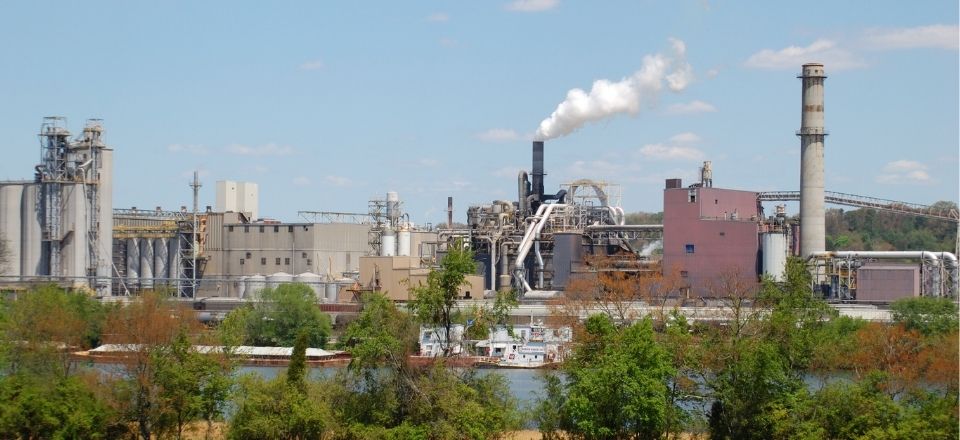Site Remediation
New Jersey’s Brownfields Act promotes the clean-up and redevelopment of environmentally impacted properties throughout the state, known as brownfields. The clean-up for the redevelopment of these sites is known as site remediation.
Examples of brownfield properties include former manufacturing or processing facilities, dumps, landfills, gas stations, transportation companies, and dry cleaners. Sites that have been abandoned for years are also considered brownfields.
There are many benefits for a company, developer, or other entity to clean up a brownfield site, including:
- Reduce the risk of health concerns for humans and wildlife.
- Improve water, air, and ground quality.
- Beautify a community; many brownfields are developed into community parks, playgrounds, or green spaces.
- Add to job creation and tax bases. Many brownfield sites are developed into retail centers, office parks, hotels, restaurants, apartment buildings, and mixed-use spaces.
- Be a catalyst for other development in the surrounding neighborhoods.
- Leverage governmental incentives, low-interest loans, and grants to reduce the costs of redeveloping a brownfield.
- Improve property values and decrease neighborhood blight.
- Take advantage of existing infrastructure, such as roads and sewers.
- Decrease vandalism, trespassing, drug dealing, and crime surrounding a brownfield site.
What Is the Site Remediation Process?
Commercial property owners, purchasers, and developers of brownfield sites must undergo a lengthy remediation process. They will need to be environmentally compliant in everything they do, from their first due diligence, to remediation, to final construction.
The site remediation process comprises three essential phases:
- Phase I, II, and III Environmental Site Assessments (ESAs).
- Remediation design.
- Remediation execution and construction.
Phase I, II, and III ESAs
A Phase I ESA is a fundamental environmental risk assessment that satisfies the requirements to qualify for a limitation of liability when completed before purchasing a site. This limitation shields the property owner or developer from legal liability if contamination is later found on the property.
A Phase I ESA determines whether the property has an environmental concern and business environment risk. It typically includes a records review, site visit, and interviews. If there is no cause for concern, a purchase can generally be made confidently. A Phase II ESA is recommended if there is cause for environmental concern.
The Phase II ESA will determine whether contaminants or other relevant environmental conditions are present. It may include soil and groundwater sampling, lab testing to compare results with local, state, and federal regulations, an inspection of interior spaces for asbestos, mold, radon, or lead-based paint, and identification of wetlands, ecological resources, or endangered species that may prevent specific uses.
If a Phase II assessment reveals environmental contamination, a Phase III assessment is completed. This comprehensive assessment will determine the extent of environmental impacts to the ground and air. It will also include remediation recommendations and cost estimates.
Remediation Design
After the contamination assessment is completed, a remediation design begins. The design will show the nature, degree, and horizontal and vertical extent of the contamination. It will also provide recommended remediation techniques and technologies.
Remediation design analyzes each element and stage of the remediation plan in relation to regulatory requirements. It also provides detailed cost estimates. This document is intended to give the landowner or developer everything they need to start accepting bids for the remediation project.
Remediation Execution and Construction
The third phase of site remediation is the actual clean-up of the contamination and bringing the property into environmental compliance. It can include removing underground storage tanks (USTs), remediating contamination in soil and water, constructing facilities and equipment for ongoing remediation, and other activities. Construction of new facilities or other projects can begin once all remediation has been completed.
What Are Legal Requirements for Site Remediation?
A municipality or developer must abide by stringent federal and state environmental laws when remediating a brownfield. Regulatory agencies and community watchdogs will scrutinize any development to ensure sound environmental stewardship.
Being a green company is essential but daunting. Regulations, legislation, and environmental laws are often complex and subject to frequent changes. Most companies, purchasers, or developers of brownfields engage legal counsel from the start. This helps them ensure compliance with laws, mitigate liability and exposure, and rectify environmental issues that may arise.
Legal counsel can help with these other critical environmental considerations as well:
- Protection from and minimizing liability related to land contamination, unexpected costs associated with environmental clean-up, and unfavorable purchases of previously contaminated property.
- Required permitting related to air, water, and waste.
- Industrial Site Recovery Act (ISRA) and Brownfields Act counseling and compliance.
- Brownfield project management, finding the best incentives available, and protecting liability for environmental violations.
- Litigation relating to insurance disputes, clean-up obligations, and alleged federal and state violations of environmental laws.
- Coordinating due diligence and environmental site assessments.
- Assisting with financing and closing transactions involving contaminated properties.
- Counseling on the purchase of environmental liability insurance.
- Site remediation services: contractor negotiations, insurance, and regulatory compliance.
- Policy change notifications and guidance on their impact on remediation projects.
Does New Jersey Help Purchasers Remediate a Site?
The Brownfields Act was enacted to help municipalities and commercial and private developers overcome obstacles related to the remediation of brownfields. The state recognizes the importance of keeping land healthy and productive. The Brownfields Act assists potential sellers and purchasers of brownfields with the following:
- Identifying brownfield sites: The Brownfields Act encourages New Jersey municipalities to identify and classify brownfields in their communities, both public and private. It also provides resources for marketing, selling, and redeveloping the properties.
- Funding for assessments: New Jersey municipalities can receive grants covering 100 percent of the cost of identifying the degree and type of contamination on sites owned by the city. This assessment also includes recommendations for remediating the property safely.
- Collaboration with state authorities: The Brownfields Act encourages the state to make it easy for developers and municipalities to clean up affected sites. Legal counsel for the municipality or developer should review the Memorandum of Agreement, which is the contract between the entity and the New Jersey Department of Environmental Protection to work together to remediate a property. This agreement also protects the developer or municipality from future liability if unknown or unsuspected contamination is discovered later. Execution of the contract must occur before the redeveloper can receive loans, grants, or other incentives to clean up and build on the property.
- Financing: The Brownfields Act makes grants, low-interest loans, and tax incentives available to municipalities and private developers to clean up the sites. The legislature created the Hazardous Discharge Site Remediation Fund that provides municipalities and developers grants to investigate sites and low-interest loans to redevelop them.
Environmental law is complex. A site remediator must follow all applicable local, state, and federal laws related to air, ground, and water contamination and pollution. These projects require the knowledge of a legal team.
Our New Jersey environmental lawyers have navigated the complexities of site remediation for many clients. We are proud of our work in helping remediate brownfield sites, making the environment and communities cleaner and healthier.
New Jersey Environmental Lawyers at Herold Law Will Keep Your Business Compliant With Site Remediation Regulations
Our knowledgeable New Jersey environmental lawyers at Herold Law, P.A. can help your company operate within the law and minimize exposure to violations. Whether you are currently planning your environmental strategy or need help with another related matter, we can help. Call us at 908-647-1022 or contact us online to schedule an initial consultation. Located in Warren, New Jersey, we serve clients throughout the surrounding areas, including Plainfield.




 908-679-5011
908-679-5011



